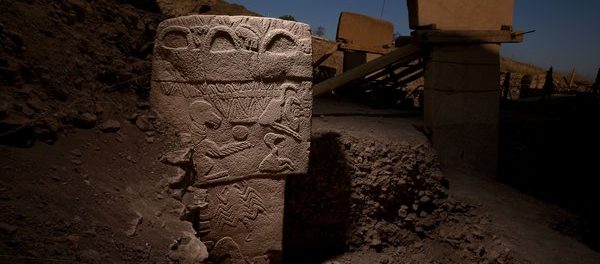Gobekli Tepe Carving Reveals Cataclysmic Event 10,000 BC

Archeologists reveal new finds that suggest a cataclysmic event happened 10,000 BC that changed the course of mankind.
The study from the Edinbourgh University found a correlation between certain carvings on a pillar at the ancient site in Turkey that align with certain constellations in the night sky at that time.
The archeologists conclude the stone pillars are a written record of an amazing celestial event.
The details of the structure’s function remain a mystery, until now.
This study also suggests that Gobekli Tepe was an early observatory of celestial movements.
Göbekli Tepe, “Potbelly Hill” in Turkish, is an archaeological site atop a mountain ridge in the Southeastern Anatolia Region of modern-day Turkey, approximately 12 km (7 mi) northeast of the city of Şanlıurfa. The tell has a height of 15 m (49 ft) and is about 300 m (980 ft) in diameter. It is approximately 760 m (2,490 ft) above sea level.
The tell includes two phases of ritual use dating back to the 10th–8th millennium BCE. During the first phase, pre-pottery Neolithic A (PPNA), circles of massive T-shaped stone pillars were erected, the world’s oldest known megaliths. More than 200 pillars in about 20 circles are currently known through geophysical surveys. Each pillar has a height of up to 6 m (20 ft) and a weight of up to 20 tons. They are fitted into sockets that were hewn out of the bedrock. In the second phase, Pre-Pottery Neolithic B (PPNB), the erected pillars are smaller and stood in rectangular rooms, also with floors of polished lime. The site was abandoned after the PPNB-period. Younger structures date to classical times.
Watch the Video for More:







